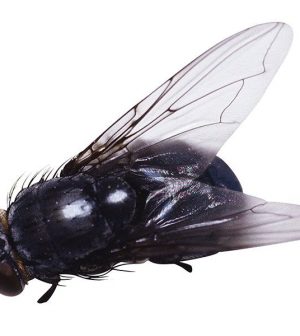- Understanding the Connection Between Anxiety and Depression
- How Daily Prunes Can Influence Cholesterol and Inflammation
- When to Take B12 for Better Absorption and Energy
- Epsom Salts: Health Benefits and Uses
- See What Saffron Can Do for Sleep and Heart Health
- 6 Common Mistakes to Avoid Before Your Physical
- Can Sweating Really Help You Beat a Cold?
- Strengthening Your Relationship: Practical Strategies
- Skip Storing This Everyday Product in the Fridge Door
- Green Tea + B3 Pairing May Boost Brain Health
Flies, Roaches Probably Don’t Spread COVID

You may not have even considered the possibility, but new research finds that flies and roaches are not likely to spread COVID-19.
Although public health professionals and officials now have a better understanding of how COVID-19 spreads, there are lingering concerns about whether it can spread indirectly through contaminated surfaces, animals or insects.
According to study co-author Gabriel Hamer, an AgriLife Research entomologist in Texas A&M’s department of entomology, insects are known to transmit a variety of infectious diseases to people, so determining their potential contribution to the transmission of SARS-CoV-2 was given priority in the early stages of the pandemic.
“We were sampling insects in homes with recent human COVID-19 cases, some of which also had dogs and cats actively infected with SARS-CoV-2,” Hamer explained in a university news release. “We suspected these were high-risk environments where insects may be able to become contaminated with the virus if they were contacting the infected humans, animals or contaminated surfaces. Instead, we did not detect evidence of the virus in the sampled insects from these homes.”
The research team had previously found that households with confirmed positive human COVID-19 cases experienced a transmission of SARS-CoV-2 from humans to pet dogs and cats. And the team has recently been researching COVID-19 transmission among Texas white-tailed deer.
But what about insects?
In earlier studies from other researchers, after being exposed to SARS-CoV-2 in a laboratory setting, house flies showed signs of both the virus and viral RNA. Still, the AgriLife study did not conclude that these insects were obtaining SARS-CoV-2 viral RNA in household environments.
According to Hamer, mechanical transmission would entail the pathogen being spread to a person by infectious particles on an insect’s body. With biological transmission, the pathogen would enter the insect, develop and then multiply before spreading through the insect’s saliva or feces.
The majority of vector-borne pathogens, like the West Nile virus in mosquitoes, are spread biologically, Hamer said. However, flies that don’t bite can mechanically spread bacteria like salmonella.
In the new study, Hamer’s team processed the contents of 133 insect traps that were placed in 40 homes that each had at least one confirmed human COVID-19 case. From June to September 2020, sticky traps captured more than 1,345 insects, including 11 different fly and roach species.
The researchers used PCR tests to evaluate the insects. Each of the 243 pools of individual insects tested negative for SARS-CoV-2.
The day after dog or cat samples tested positive for the virus, 14 more insect traps were set up in seven homes, increasing the likelihood that insects would come into contact with contaminated animals or surfaces.
According to the findings, published recently in the Journal of Medical Entomology, neither biting nor non-biting roaches or flies are likely to spread the virus.
“This study provides more evidence to help narrow down transmission routes of SARS-CoV-2 and evaluates different methods for novel surveillance techniques,” Hamer said. “It was a team effort that allowed us to rapidly deploy these traps in high-risk settings to directly assess the role of insects in the COVID-19 pandemic.”
More information
The U.S. Centers for Disease Control and Prevention has more on how COVID spreads.
SOURCE: Texas A&M AgriLife Research, news release, July 28, 2022
Source: HealthDay
Copyright © 2026 HealthDay. All rights reserved.










